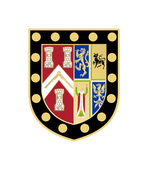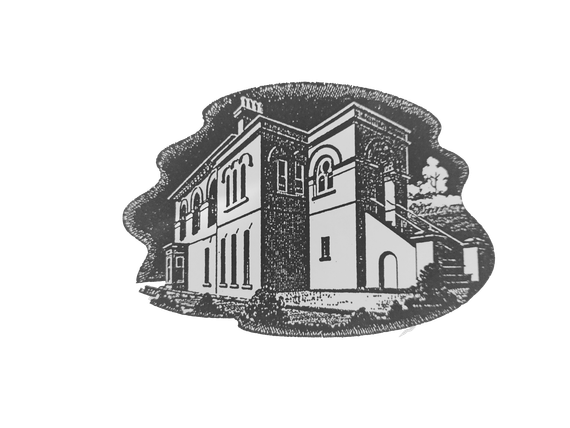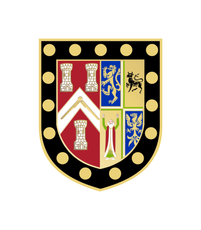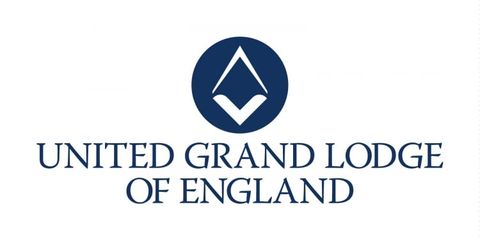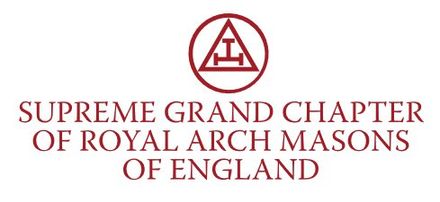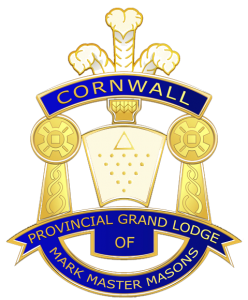Discover Freemasonry
Freemasonry is one of the world’s oldest social and charitable organisations in the world. Its roots lie in the traditions of the medieval stonemasons who built our cathedrals and castles.For Freemasons, there are four important values that help define their path through life: Integrity, Friendship, Respect and Charity. In today’s world filled with uncertainty, these principles ring as true as they have at any point in the organisation’s history.
Integrity:
Freemasons are focused on building themselves as people of integrity and membership provides the structure to help achieve that goal.
Friendship:
Freemasonry provides the common foundation for friendships between members, many of which will last for life.
Respect:
Freemasonry brings people together irrespective of their race, religion or any other perceived differences that can divide us as a society.
Service:
Integrity:
Freemasons are focused on building themselves as people of integrity and membership provides the structure to help achieve that goal.
Friendship:
Freemasonry provides the common foundation for friendships between members, many of which will last for life.
Respect:
Freemasonry brings people together irrespective of their race, religion or any other perceived differences that can divide us as a society.
Service:
The complementary text for this is: Whether participating in events, fundraising for a charitable cause or volunteering for public or community organisations, service is at the very heart of Freemasonry. Our members make valuable contributions by donating time, resources and skills.
History
Early Masonry In Launceston
The first indication as to the presence of Freemasonry in Launceston is to be found in the records of the Provincial Grand Lodge of Cornwall form 1765 when it was ordered that a letter be sent to the Brethren assembling at Launceston acquainting them that if they did not petition for a constitution, they would be represented forthwith to the Grand Lodge as being quite illegal. The non-regular Lodge had almost certainly been at work for some years before 1765, probably under the name of “Modern and Regular “.
In December 1767, no doubt as a direct result of this ultimatum, 'The Cornubian Lodge was warranted by the Grand Lodge Of the” Moderns ", His Grace the Duke of Beaufort being the Grand Master. This Lodge first bore the number 410, becoming No. 345 in 1770 and No. 268 in 1780. It was erased as No. 268 in the year 1783. The number was then given to the Lodge of Contentment, Plymouth Dock. This Lodge had the same fate and suffered erasure in 1786.
From the scanty records now available, it is quite obvious that during its life of at least eighteen years, this Lodge met at the old Devonport & Exeter Inn in Exeter Street, Launceston. It is interesting to note that this establishment is still part of modern Launceston, albeit under the sign of the Newmarket. It must be remembered that, from 1757 until about 1820, Launceston was a parole Town for French Officers who were prisoners in this country during the Seven Years' and Napoleonic Wars. It was during this period that the nearby Prison at Princetown on Dartmoor was built to house the other ranks and those officers who refused to give their parole.
During these Wars French Officers are known to have founded Lodges in several ports of Britain, where they practised Freemasonry under the "Grand Orient Rite Francolse du Moderne” Launceston was, however, the only place in Cornwall which had such a Lodge. There are definite proofs of the existence of this Lodge and there is still preserved a Certificate bearing the date of 1757 which could well be the date of the formation of " Modern and Regular". This Certificate bears the signatures of Francis Rodd of Trebartha and John Molesworth of Tetcott. two local squires. The document is written in French. There is also in existence a certificate issued in 1802 to one Robert Marlin, who was then the organist of St. Mary Magdalene's Church in Launceston. Part of this certificate is written in English. Until a few years ago this certificate was known to be in a collection of Masonic documents at Leicester.
In view of the fact that the Lodge number 268 was erased in 1783, it seems that there can be no doubt that it was to the French Lodge that this certificate in 1802 related. The late W.Bro. A. K. Lee, who was secretary of Dunheved Lodge for many years, was keenly interested in Masonic history, and secured much information concerning early Freemasonry in Launceston. He discovered that some of the French prisoners of war bore names which are well known in Launceston and its surrounding district today. Among these are Barriball, Baskerville, Benoy, Burgoyne, Cater and Prideaux.
There was an attempt to revive English Freemasonry in Launceston in the year 1808. and the leader of this movement was a Bro. Dr. John Cudlipp. A letter from W.Bro. John Knight to him which is copied in the minute book of the Druids' Royal Arch Chapter at Redruth, shows that the Brethren at Launceston were endeavouring to purchase the warrant of a lapsed Lodge.
During these Wars French Officers are known to have founded Lodges in several ports of Britain, where they practised Freemasonry under the "Grand Orient Rite Francolse du Moderne” Launceston was, however, the only place in Cornwall which had such a Lodge. There are definite proofs of the existence of this Lodge and there is still preserved a Certificate bearing the date of 1757 which could well be the date of the formation of " Modern and Regular". This Certificate bears the signatures of Francis Rodd of Trebartha and John Molesworth of Tetcott. two local squires. The document is written in French. There is also in existence a certificate issued in 1802 to one Robert Marlin, who was then the organist of St. Mary Magdalene's Church in Launceston. Part of this certificate is written in English. Until a few years ago this certificate was known to be in a collection of Masonic documents at Leicester.
In view of the fact that the Lodge number 268 was erased in 1783, it seems that there can be no doubt that it was to the French Lodge that this certificate in 1802 related. The late W.Bro. A. K. Lee, who was secretary of Dunheved Lodge for many years, was keenly interested in Masonic history, and secured much information concerning early Freemasonry in Launceston. He discovered that some of the French prisoners of war bore names which are well known in Launceston and its surrounding district today. Among these are Barriball, Baskerville, Benoy, Burgoyne, Cater and Prideaux.
There was an attempt to revive English Freemasonry in Launceston in the year 1808. and the leader of this movement was a Bro. Dr. John Cudlipp. A letter from W.Bro. John Knight to him which is copied in the minute book of the Druids' Royal Arch Chapter at Redruth, shows that the Brethren at Launceston were endeavouring to purchase the warrant of a lapsed Lodge.
The reason for this was that an Act of Parliament, the 39th Geo IIl Chap. 79 enacted for the suppression of Societies established for treasonable and seditious purposes, contained a Clause (Sec. 5) in favour of Masons meeting under a warrant from Grand Lodge prior to the passing of the Act. But it was understood. however, that no new Lodge could be constituted while the Act was in force. The Launceston Brethren were not alone in their quest, for At the same time (1808) certain Brethren in the town of Truro were also seeking a redundant warrant. They were successful, and, on 11th April 1810, obtained the warrant of No. 548 which had lapsed and to which the new No. 620 was assigned. This Lodge is now No. 331 Phoenix Lodge of Honour & Prudence [Now based in Perranporth] On 4th July, 1810, another letter from W.Bro. John Knight to Bro. Dr. John Cudlipp shows that the Launceston brethren had not ceased in their endeavour: for, with that letter, a Form of Petition was enclosed for completion. For a second time, however, the hoped-for Warrant was obtained by another Lodge, this time the present Mount Sinai Lodge No. 121 Penzance.
After this second disappointment our ancient Brethren seem to have lost heart. Although, when the Truro Lodge was consecrated at the P.G.L. held in Truro on 12th June, 181 0, It was announced that a lodge was likely to be consecrated at Launceston. No further activity can be traced until the formation of Dunheved No. 1091 in 1859-60. It is probable, nevertheless, that a non-regular lodge met in the town for some years after 1810. Prior to the formation of Lodge Dunheved, it’s evident that most local Freemasons were members of Loyal Victoria Lodge at Callington, which was formed about thirty years prior to that of Dunheved. It was, of course, the nearest lodge to Launceston. All but one of the founder members of Dunheved were members of
Loyal Victoria though Loyal Victoria does not appear actually to have sponsored Dunheved Lodge.
After this second disappointment our ancient Brethren seem to have lost heart. Although, when the Truro Lodge was consecrated at the P.G.L. held in Truro on 12th June, 181 0, It was announced that a lodge was likely to be consecrated at Launceston. No further activity can be traced until the formation of Dunheved No. 1091 in 1859-60. It is probable, nevertheless, that a non-regular lodge met in the town for some years after 1810. Prior to the formation of Lodge Dunheved, it’s evident that most local Freemasons were members of Loyal Victoria Lodge at Callington, which was formed about thirty years prior to that of Dunheved. It was, of course, the nearest lodge to Launceston. All but one of the founder members of Dunheved were members of
Loyal Victoria though Loyal Victoria does not appear actually to have sponsored Dunheved Lodge.
Traces also remain of operative masons in Launceston. These may be found in particular at the Priory ruins near the church of St. Thomas, at the Southgate Arch. and upon other ancient stonework in the vicinity of the town.
The Building Of The Present Temple In 1877
In February 1874, a Committee was set up to go into the matter of acquiring premises for the Lodge after a proposition had been carried to the effort that it was time that Dunheved had its own Lodge premises.
Bro. Col. J. H. Deakin Offered the sum of £100 towards the cost of the new structure, and Bro. J. K. Lethbridge conveyed most of the site in Tavistock Road unconditionally to the Lodge. In 1875 an architect, Mr. James Hine, was instructed to prepare plans for. a Masonic Temple, which he was to submit by January 1876, Mr Hine also designed Dunheved College and the Wesley Chapel.
In February 1876, the tender of a Mr. Burt. a well-known local builder and contractor at Launceston. was accepted in the sum of £675 for the construction of the new buildings. On 16th May 1876 an Emergency Lodge was held for the purpose of laying the foundation stone.
This was obviously n red-letter day in Dunheved. and must have created very considerable local interest. The brethren, clad in full regalia and with banner aloft, marched in procession from Broad Street to the site in Tavistock Road. They were led by the Launceston Borough Band, and accompanied by their Tyler with drawn sword. At the site of the new Building the brethren formed a hollow square, and the foundation stone was then formally laid by Bro. George Ross of Ogbeare Hall.
During the actual construction of the building. it became necessary, as often happens, to alter the plans some extent. The Lodge having acquired an organ (presumably the one still in use today) an organ recess was now provided.
Other additions included the beautiful moulded circle in the centre of the ceiling of the Temple, the bay window in the refectory, and the wash-house and larder in the Caretaker's quarters. All these added amenities cost a further £40.
The building of the Temple necessitated strenuous efforts to raise funds to pay for its construction. The brethren accordingly arranged to hold a Bazaar, and also staged a Concert in aid of the building fund. When the building was completed, it was necessary to arrange a mortgage of £300 in order to meet, with money already raised in various ways, the total expenditure of over £700.
Considering the alteration in the value of money and the comparatively small number of the members of the Lodge in those days, it was really a considerable achievement to have raised over £400 in so short a time. The present members of Dunheved Lodge owe a great debt of gratitude to their forbears for their provident care and initiative in providing a Temple which has so admirably served the purposes of the Lodge for many years in spite of the additional demands made upon It by a greatly increased membership.
On July 5th 1877 Dunheved saw the "Masonic Hall" dedicated by the Provincial Grand Master of Cornwall, The Earl of Mount Edgecumbe.
To mark the occasion. Provincial Grand Lodge of Cornwall again met in Launceston and a special train was run from West Cornwall for brethren attending the Lodge. On that day Launceston Station itself must have been an impressive sight.
The first regular Lodge meeting in the new building was on 31st of May 1877, a few weeks before the formal ceremony of dedication.
In 1877 the Lodge was embellished by a tessellated pavement given by Bro. T. P. Trood, in the same year, the sword of Napoleon III was presented by Dr. Scoffern. With the obvious intention of assisting in furnishing the Lodge, each Brother was asked in 1877 to present a chair to the Lodge.
The building of the Masonic Hall which incorporated quarters for a resident tyler and caretaker, made it necessary to appoint someone to that office. The first tyler appointed was a Sgt. Fidler
Bro. Col. J. H. Deakin Offered the sum of £100 towards the cost of the new structure, and Bro. J. K. Lethbridge conveyed most of the site in Tavistock Road unconditionally to the Lodge. In 1875 an architect, Mr. James Hine, was instructed to prepare plans for. a Masonic Temple, which he was to submit by January 1876, Mr Hine also designed Dunheved College and the Wesley Chapel.
In February 1876, the tender of a Mr. Burt. a well-known local builder and contractor at Launceston. was accepted in the sum of £675 for the construction of the new buildings. On 16th May 1876 an Emergency Lodge was held for the purpose of laying the foundation stone.
This was obviously n red-letter day in Dunheved. and must have created very considerable local interest. The brethren, clad in full regalia and with banner aloft, marched in procession from Broad Street to the site in Tavistock Road. They were led by the Launceston Borough Band, and accompanied by their Tyler with drawn sword. At the site of the new Building the brethren formed a hollow square, and the foundation stone was then formally laid by Bro. George Ross of Ogbeare Hall.
During the actual construction of the building. it became necessary, as often happens, to alter the plans some extent. The Lodge having acquired an organ (presumably the one still in use today) an organ recess was now provided.
Other additions included the beautiful moulded circle in the centre of the ceiling of the Temple, the bay window in the refectory, and the wash-house and larder in the Caretaker's quarters. All these added amenities cost a further £40.
The building of the Temple necessitated strenuous efforts to raise funds to pay for its construction. The brethren accordingly arranged to hold a Bazaar, and also staged a Concert in aid of the building fund. When the building was completed, it was necessary to arrange a mortgage of £300 in order to meet, with money already raised in various ways, the total expenditure of over £700.
Considering the alteration in the value of money and the comparatively small number of the members of the Lodge in those days, it was really a considerable achievement to have raised over £400 in so short a time. The present members of Dunheved Lodge owe a great debt of gratitude to their forbears for their provident care and initiative in providing a Temple which has so admirably served the purposes of the Lodge for many years in spite of the additional demands made upon It by a greatly increased membership.
On July 5th 1877 Dunheved saw the "Masonic Hall" dedicated by the Provincial Grand Master of Cornwall, The Earl of Mount Edgecumbe.
To mark the occasion. Provincial Grand Lodge of Cornwall again met in Launceston and a special train was run from West Cornwall for brethren attending the Lodge. On that day Launceston Station itself must have been an impressive sight.
The first regular Lodge meeting in the new building was on 31st of May 1877, a few weeks before the formal ceremony of dedication.
In 1877 the Lodge was embellished by a tessellated pavement given by Bro. T. P. Trood, in the same year, the sword of Napoleon III was presented by Dr. Scoffern. With the obvious intention of assisting in furnishing the Lodge, each Brother was asked in 1877 to present a chair to the Lodge.
The building of the Masonic Hall which incorporated quarters for a resident tyler and caretaker, made it necessary to appoint someone to that office. The first tyler appointed was a Sgt. Fidler
The Temple stands in its own grounds and consists of a two storied Building. On the ground floor are the caretaker's quarters, the refectory, cellar, ante-room and offices [Now the refectory, bar, kitchen and wash-room]. On the first floor, which is approached by a flight of steps leading to a porch (in addition to stairs from the ground floor of the building) are two ante-rooms. The Temple itself runs almost the whole length of the building.
For those wishing to learn more of the history of Dunheved Lodge No.789 from 1860 to 1960 you can find a PDF provided for your viewing by clicking here
Lodge Calendar
April 2024
Mon
Tue
Wed
Thu
Fri
Sat
Sun
1
2
3
4
5
6
7
8
9
10
11
12
13
14
15
16
17
18
19
20
21
22
23
24
25
26
27
28
29
30
1
2
3
4
5
How To Join
TO BE ELIGIBLE TO JOIN YOU MUST:
- Be a man of at least 18 years of age
- Be of good moral character
- Have a personal belief in a Supreme Being (the definition of a Supreme Being is a personal matter for each individual)
- Decide to become a Mason of “your own free will and accord” without expectation of any material gain or benefits
- Be loyal to your country
- Be dedicated to providing for your own family
- Have a sincere determination to conduct yourself in a manner that will earn the respect and trust of others
- Possess a desire to help others through community service and universal benevolence
If you meet the above requirements and would like to express your interest in Freemasonry and joining Dunheved Lodge No.789 in particular, please send an email using the contact form provided below and we will get back to you as soon as possible.
The Royal Arch
What is Royal Arch Masonry?
The Royal Arch is the culmination of "pure ancient masonry". The Craft gives its members eminently practical rules by which they can live their lives in the service of both God, however they worship Him, and the community as a whole.
Man, however, is not simply a practical being but has an essential spritual aspect to his nature. This is taken up in the Royal Arch, in which the candidate, without trespassing on the bounds of religion, is led to contemplate the nature of God and his personal relationship with Him.
Thus the Royal Arch leads the candidate from the practical to the spiritual and completes "pure ancient masonry", a fascinating journey of self- knowledge and self - discovery beginning with the Entered Apprentice degree and culminating in the First Principal's chair of the Chapter.
How To Join The Royal Arch
The prime qualification for admission into the Royal Arch is to be a Master Mason, of at least four weeks standing, in a Lodge under the United Grand Lodge of England, or a Lodge under a Grand Lodge recognised by it.
As in all other Masonic Orders you will need a proposer and seconder who are members of the Chapter in which you seek to be exalted.
If you are interested in joining The Royal Arch or Dunheved Chapter No.789 in particular, please look at the bottom of your lodge summons which gives details of our Royal Arch Representative who will assist members interested in joining The Royal Arch.
If you are not a member of Dunheved, but would like to join Dunheved Chapter, simply send us an email via our contact form below.
Contact Us
If you are interested in Freemasonry and would like to be considered for membership into Dunheved Lodge No. 789 or Dunheved Chapter, please fill out the contact form below providing your details so we can get back to you in a timely manner.
Thank you for contacting us.
We will get back to you as soon as possible
We will get back to you as soon as possible
Oops, there was an error sending your message.
Please try again later
Please try again later
